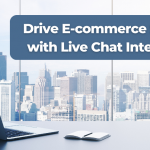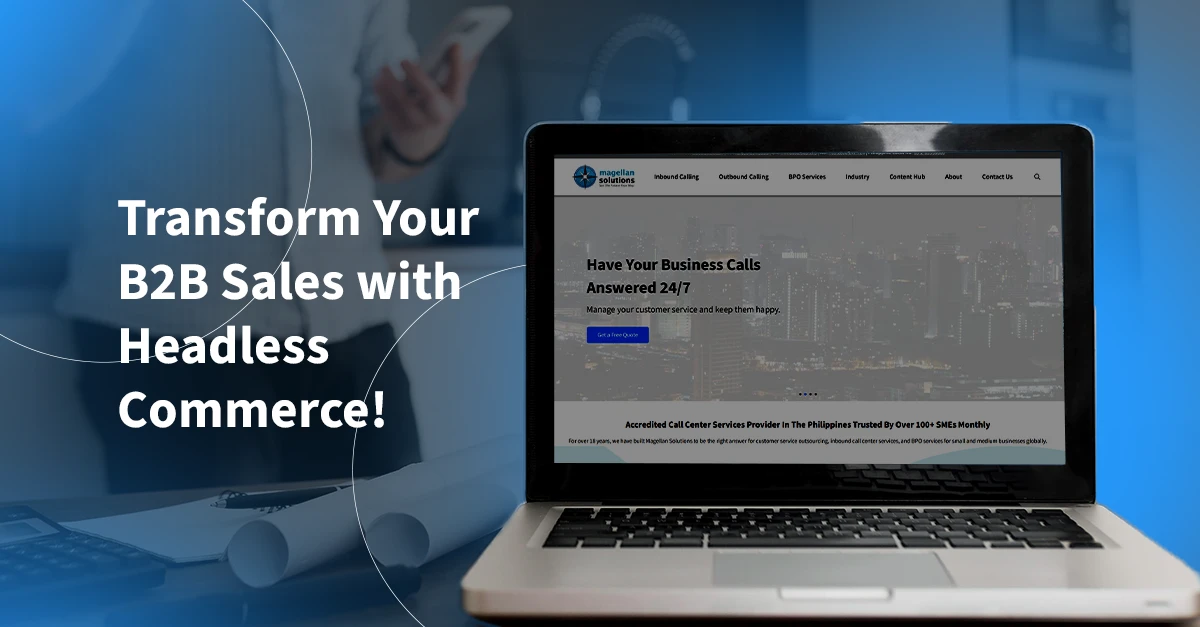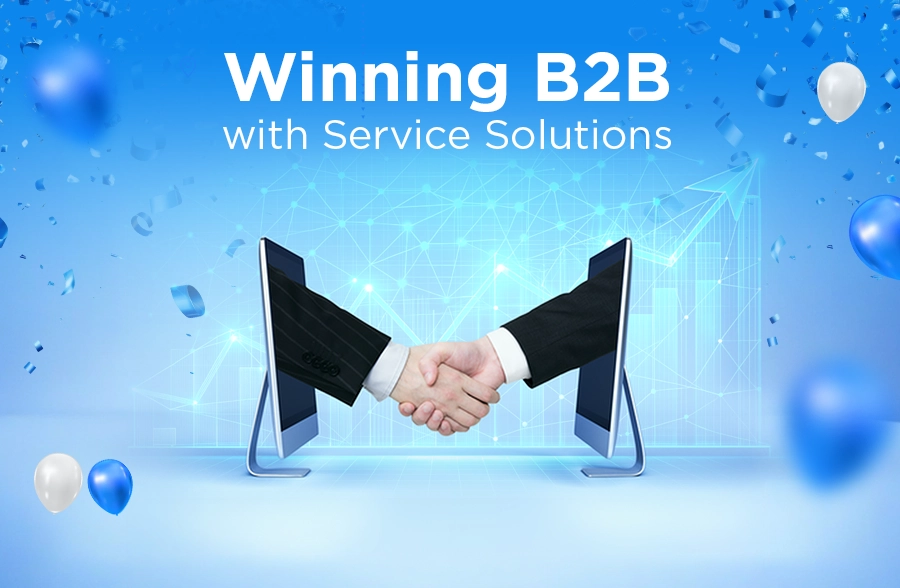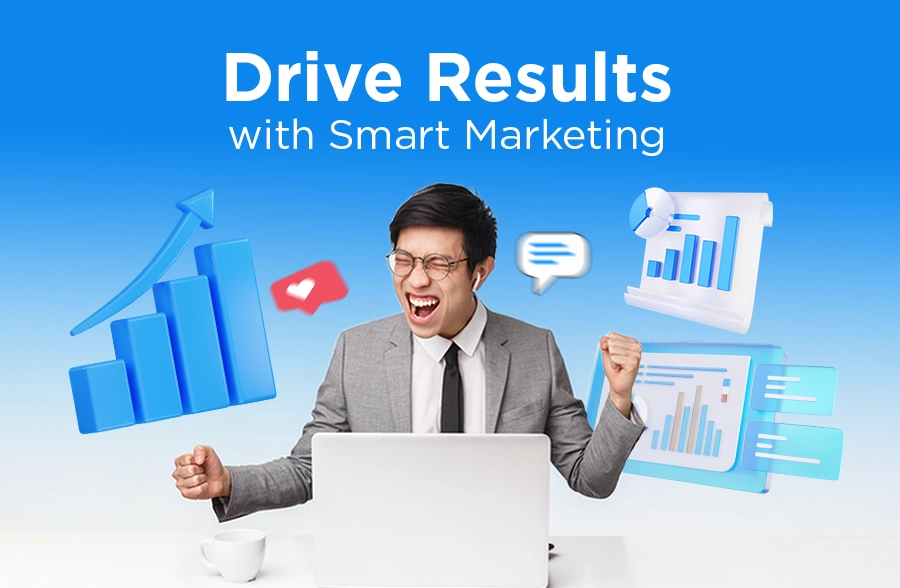Schedule a FREE call with our outsourcing expert now and get a precise quotation that meets your requirements. Don't wait - get started today!
Are you ready to revolutionize your online business? B2B headless commerce is revolutionizing global business practices. Discover how this game-changing strategy can revamp your sales process.
Experience the freedom of a versatile online store that seamlessly adjusts to any device or platform. With B2B headless commerce, you can effortlessly revamp your website’s appearance without disrupting its functionality. By separating the front end from the back end, you have complete autonomy and adaptability at your fingertips.
With this approach, you can customize experiences for your B2B customers, enhance the speed of your website, and seamlessly add new features as your business grows. It’s similar to having a versatile tool for your e-commerce needs.
Ready to explore how B2B headless commerce can boost your business? Let’s dive in and discover its potential together. Read along!
Understanding the Architecture of B2B Headless Commerce
B2B headless commerce is transforming the way businesses operate online. This revolutionary approach separates the front-end presentation layer from the back-end functionality, offering unprecedented flexibility and scalability.
Decoupling the Front-end and Back-end
In traditional e-commerce, the front-end and back-end are tightly coupled. B2B headless commerce breaks this mold by separating these components. This decoupling allows businesses to update their user interface without affecting the underlying business logic and vice versa. It’s like having a modular system where you can swap out parts without disrupting the whole machine.
API-first Approach in Headless Commerce
At the heart of B2B commerce is an API-first approach. APIs (Application Programming Interfaces) act as the connective tissue between the front-end and back-end. This approach allows seamless integration with various platforms and services, enhancing the overall commerce cloud ecosystem. Think of APIs as universal translators, enabling different parts of your system to communicate effortlessly.
Flexibility and Scalability Advantages
The headless commerce architecture offers unparalleled flexibility and scalability. Businesses can quickly adapt to changing market demands by updating their front end without overhauling their entire system. This flexibility extends to scaling operations, allowing companies to handle increased traffic and transactions efficiently. It’s like having a business that can grow and change shape to fit any market condition.
Key Benefits of Implementing B2B Headless Commerce
Adopting B2B headless commerce can revolutionize your business operations. Let’s explore the key advantages that make this approach so compelling for modern businesses.
Enhanced Customization and Personalization
B2B headless e-commerce empowers businesses to create highly customized user experiences. With the ability to tailor the front end independently, companies can craft unique interfaces for different customer segments or even individual clients. This level of personalization can significantly enhance customer experiences and drive loyalty.
Improved Speed and Performance
By decoupling the front end from the back end, B2B commerce platforms can deliver lightning-fast performance. This speed boost isn’t just about quick page loads; it translates to improved user experience, higher conversion rates, and better search engine rankings—like giving your online presence a turbo boost.
Omnichannel Capabilities
The headless approach excels at delivering consistent experiences across multiple channels. Whether it’s a website, mobile app, or IoT device, B2B headless commerce ensures your content and functionality remain consistent. This omnichannel capability is crucial in today’s diverse digital landscape, where customers expect seamless experiences regardless of the platform they’re using.
Future-proofing Your Business
Implementing a headless commerce is a step towards future-proofing your business. As new technologies and platforms emerge, a headless architecture allows easy integration without significant overhauls. It’s like building a business on a foundation that can adapt to the future.
B2B Headless Commerce vs. Traditional E-commerce
As businesses evolve, so do their e-commerce needs. Let’s compare B2B headless commerce with traditional e-commerce to understand why many companies are switching.
Comparing Architecture and Flexibility
Traditional e-commerce platforms often come as all-in-one solutions, which can be limiting. B2B commerce, on the other hand, offers a modular architecture that allows for greater flexibility. It means businesses can choose best-of-breed solutions for each component of their e-commerce stack rather than being locked into a single vendor’s ecosystem.
Impact on User Experience and Customer Satisfaction
The flexibility of headless commerce translates directly to improved user experiences. Businesses can craft tailored interfaces and functionalities that meet the specific needs of their B2B customers. This customization leads to higher customer satisfaction and, ultimately, more vital business relationships.
Development and Maintenance Considerations
While traditional e-commerce platforms seem more straightforward to set up initially, they can become cumbersome to maintain and update over time. B2B headless commerce, despite requiring more upfront planning, offers easier long-term maintenance and updates. It’s like choosing between a pre-built house that’s hard to modify and a custom-built one that can grow with your needs.
Choosing the Right B2B Headless Commerce Platform
Selecting the right platform is crucial for the success of your headless commerce initiative. Let’s explore what to look for and how to make the best choice for your business.
Essential Features to Look For
When evaluating B2B commerce platforms, look for robust API capabilities, strong security features, and scalability. The platform should also offer good documentation and support for your developer team. Consider features like multi-language support, advanced pricing options, and inventory management that are crucial for B2B operations.
Top Headless Commerce Platforms for B2B
Several platforms have emerged as leaders in the B2B commerce space. These include commerce tools, BigCommerce, and Elastic Path. Each offers unique strengths, so it’s essential to evaluate them based on your specific business needs and future growth plans.
Evaluation Criteria for Selecting a Platform
When choosing a headless commerce platform, consider factors like ease of integration with your existing systems, scalability to match your growth projections, and the total cost of ownership. Also, evaluate the platform’s community and ecosystem, as a strong developer community can be a valuable resource for your team.
Implementing B2B Headless Commerce: Best Practices
Successfully implementing B2B headless commerce requires careful planning and execution. Here are some best practices to guide your journey.
Planning and Strategy Development
Start with a clear strategy that aligns your B2B headless commerce initiative with your overall business goals. It should include a roadmap for implementation, identifying key milestones and potential challenges. Think of it as charting a course for your business’s digital transformation.
Assembling the Right Developer Team
B2B headless commerce requires a skilled developer team familiar with API-driven architectures and modern web technologies. Invest in training your existing team, or consider partnering with experienced agencies. Your team will be the architects of your new commerce ecosystem, so their expertise is crucial.
Integration with Existing Systems
One of the strengths of headless commerce is its ability to integrate with existing systems. Plan carefully how your new headless platform will connect with your CRM, ERP, and other business-critical systems. This integration is critical to creating a seamless operational flow.
Ensuring Seamless User Experiences Across Channels
With B2B headless commerce, you have the power to deliver consistent experiences across all channels. Focus on creating intuitive, user-friendly interfaces that make it easy for your B2B customers to do business with you, regardless of their device or platform.
The Role of APIs in B2B Headless Commerce
APIs are the backbone of headless commerce, enabling seamless communication between different parts of your system. Let’s delve into their crucial role.
Types of APIs Used in Headless Architecture
B2B headless commerce relies on various APIs, including RESTful APIs, GraphQL, and webhooks. These APIs handle everything from product information and inventory management to order processing and customer data. Understanding these different API types helps build a robust and efficient headless system.
Benefits of API-driven Commerce
API-driven commerce offers numerous benefits, including increased flexibility, easier integrations, and the ability to add new features or services quickly. It’s like having a universal connector that allows you to plug in new capabilities as your business needs to evolve quickly.
Security Considerations in API Management
With the increased reliance on APIs comes the need for robust security measures. Implement strong authentication, use encryption, and regularly audit your APIs to ensure the safety of your B2B headless commerce system. Treating API security as a top priority protects your business and customers.
Optimizing B2B Headless Commerce for Conversion Rates
Implementing B2B headless commerce is just the beginning. To maximize its benefits, focus on optimizing for better conversion rates.
Leveraging Data and Analytics
B2B headless commerce platforms offer rich data and analytics capabilities. Use this data to gain insights into customer behavior, popular products, and potential bottlenecks in the purchasing process. These insights can guide your optimization efforts and help improve conversion rates.
A/B Testing and Continuous Improvement
Take advantage of the power of headless commerce’s flexibility to conduct A/B tests on different aspects of your user interface and purchasing flow. Continuously test and refine your approach to improve user experience and boost conversions. It’s like having a lab where you can experiment and perfect your e-commerce formula.
Personalization Strategies in B2B Contexts
Use the power of B2B headless commerce to create personalized customer experiences. It could include customized product recommendations, tailored pricing, or individualized content. In the B2B world, this level of personalization can significantly impact conversion rates and customer loyalty.
Harnessing the Power of B2B Headless Commerce
B2B headless commerce splits the front end from the back end, making your online store more flexible and faster. It lets you create better customer experiences across all devices. Look at your current system, pick the right platform, and get a good tech team. This approach can improve how you do business online.
Magellan Solutions can help you switch to headless commerce. We know how to set it up without disrupting your current business, and our team can create a solution that fits your specific needs.
Want to improve your online B2B store? Contact us today. We’ll walk you through the whole process, from planning to setup. Let’s work together to boost your online business with B2B headless commerce.
















